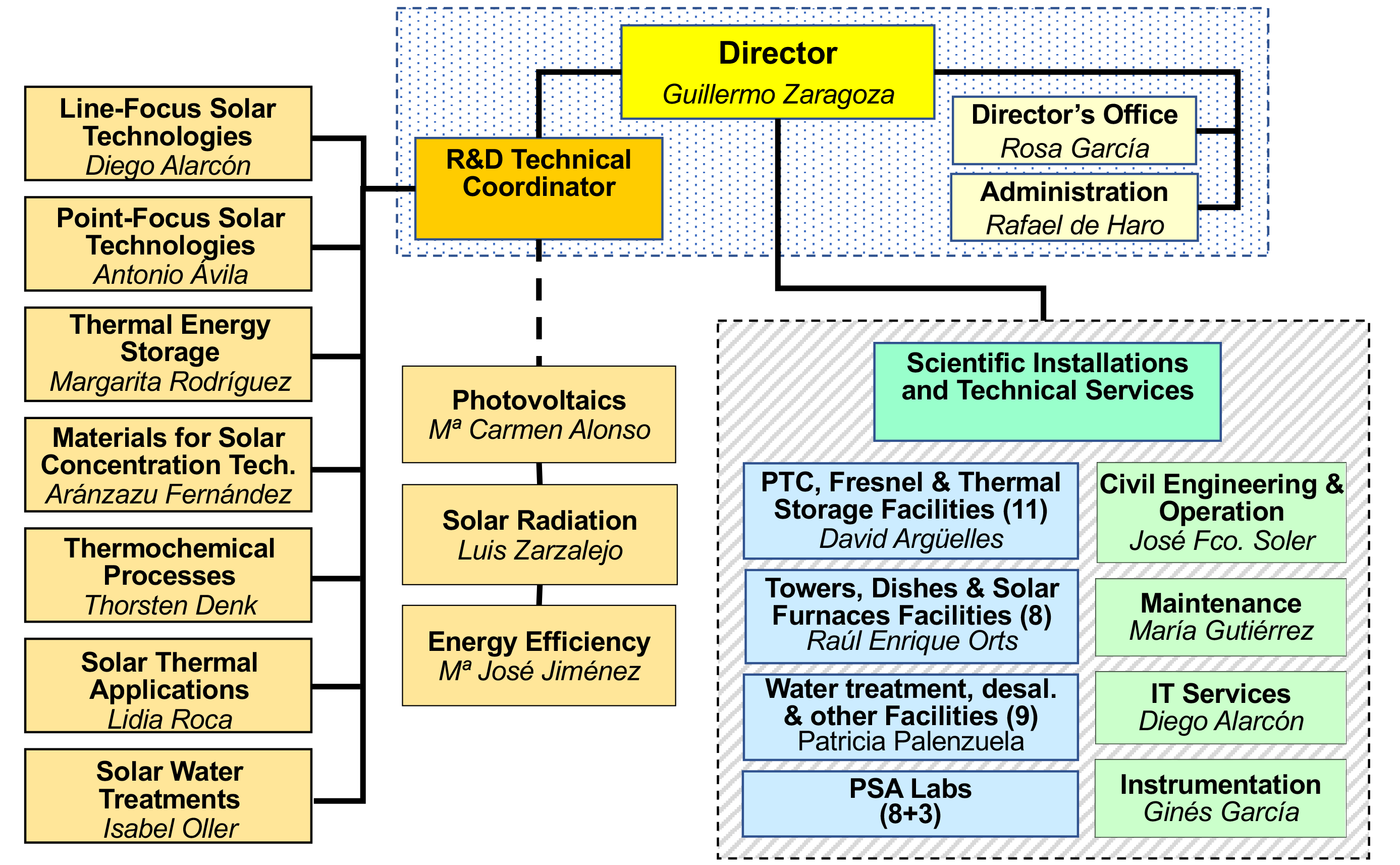

ORGANIZATION & FUNCTIONAL STRUCTURE

Since 2021, research activity at the PSA has been structured around seven R&D Units:
- Linear Focusing concentrating solar thermal technologies. Devoted to testing, evaluating and developing components and applications for linear focusing solar concentrators.
- Point Focusing concentrating solar thermal technologies. Target is focused on providing technical assessment to the industry stakeholders together with the research and innovation related to power tower technologies such as the measurement of concentrated solar flux, R&D of new fluids and receivers, and the optical analysis.
- Thermal Energy Storage for concentrating solar thermal technologies. Addressing the design, testing and optimization of thermal storage systems for temperatures above 100˚C.
- Materials for concentration solar thermal technologies. Addressing the development and testing of new or improved materials for CST solar technologies or their applications, as well as thermal treatment, aging or modification of materials.
- Thermochemical Processes to Solar Fuels and Raw Materials Production. This includes high temperature processes based on concentrated solar energy to produce hydrogen and other valuable and energy intensive raw materials.
- Solar Thermal Applications. Devoted to the development and evaluation of applications of solar thermal technology for industrial processes, including desalination and brine concentration.
- Solar Treatment of Water. Focused on exploring the chemical possibilities of solar energy, especially the potential for water decontamination and disinfection and the production of solar fuels through photochemical processes.
Supporting these R&D Units are the Direction and Technical Services Units mentioned above. These units are largely self-sufficient in the execution of their budget, planning, scientific goals, and technical resource management. Nevertheless, the seven R&D units share many PSA resources, services, and infrastructures, so they stay in fluid communication with the Direction and Services Units, which coordinate technical and administrative support services. For its part, the Director’s Office must ensure that the supporting capacities, infrastructures, and human resources are efficiently distributed. It is also the Director’s Office that channels demands to the different general support units located at CIEMAT’s main offices in Madrid.